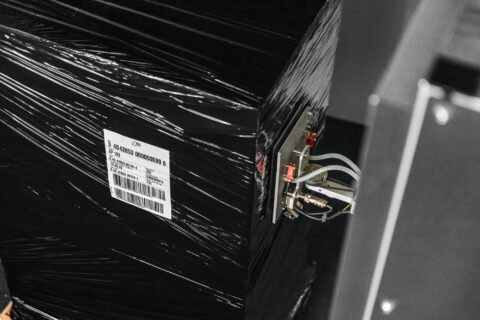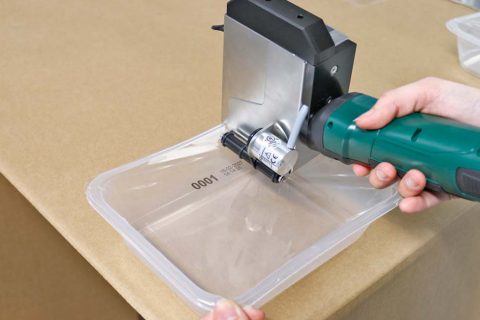Electric Applicator Arms vs. Pneumatic: Choose Wisely for Your Production Line
In the world of industrial automation, every detail matters. And when it comes to labeling on production lines, the choice between electric and pneumatic applicator arms can significantly impact the performance of the entire process. In this article, we will explore the fundamental differences between these two types of applicator arms, highlighting the advantages and disadvantages of each technology. Are you ready to delve into the choice between precision and power?
Electric Applicator Arms: High Precision Systems

Electric applicator arms, powered by electric motors, offer exceptional precision. They can perform highly controlled and repeatable movements, making them ideal for applications that require extremely precise positioning. This precision is crucial in industries where even a millimeter can make a difference, such as the pharmaceutical or electronics industry.
Furthermore, electric applicator arms are known for their versatility. They are easily programmable to adapt to a variety of product formats and can perform complex tasks with ease. Their flexibility makes them suitable for a diverse range of applications.
However, power can lead to less precision compared to electric arms. Therefore, electric arms are preferable to pneumatic ones for tasks that require extremely precise positioning or complex movements, or when the strength of pneumatic arms could damage delicate products or cause inaccuracies in high-precision labeling applications.
Pneumatic Application Arms: Power in movement

Pneumatic applicator arms use compressed air to power their movements. This technology offers significant power, making them ideal for applications that require considerable force, such as sealing heavy-duty boxes or marking on hard surfaces. Their execution speed is often higher than that of electric arms, making them suitable for high-speed production lines.
The Wise Decision: Considering Specific Needs
The choice between electric and pneumatic applicator arms largely depends on the specific needs of your production line. Here are some key considerations to help you make an informed decision:
- Precision vs. Power
Evaluate the importance of precision in your processes. If precision is crucial, electric arms might be the better choice. - Speed and Strength
If your production line requires speed and is involved in high-strength tasks, pneumatic arms may be more suitable. - Flexibility
Consider the variety of products that need labeling or marking. Electric arms are often more flexible in this regard. - Costs
Consider your budget for purchase and maintenance. Pneumatic arms can incur additional operating costs over time. - Maintenance
Examine the complexity of maintenance required for each technology and its impact on your production.
In conclusion

In conclusion, there is no universal answer to the question “electric or pneumatic?” The choice depends on your specific needs. So, before making a decision, take the time to carefully assess what is most important for your production line.
The key to a wise choice always lies in adaptability to your unique requirements.
If you need consultation or support in choosing the most suitable identification system for your company, please contact the professionals at Weber Marking Systems at www.weber-marking.com


















